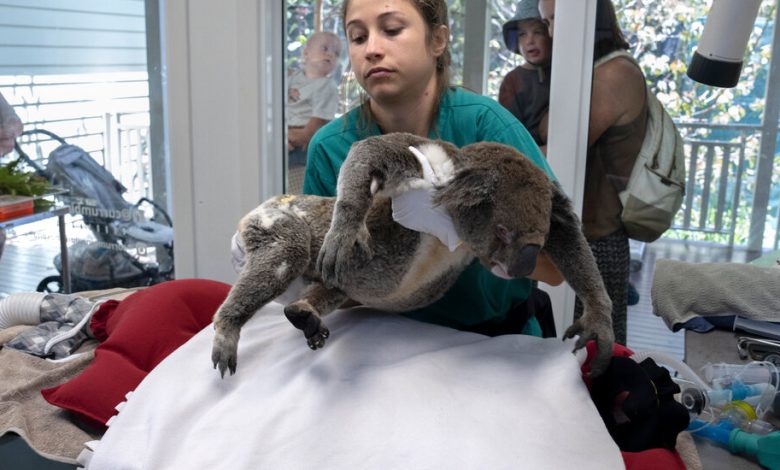Four Wild Ways to Save the Koala (That Just Might Work)

It was spring in Queensland, Australia, a season when many wild animals find themselves in trouble, and the Currumbin Wildlife Hospital was a blur of fur and feathers.
A groggy black swan emerged from the X-ray room, head swaying on its long neck. A flying fox wore a tiny anesthetic mask. An injured rainbow lorikeet squawked in its cage. (“Very angry,” a sign warned.)
“We see everything,” Dr. Michael Pyne, the hospital’s senior veterinarian. Also on the schedule for the day: three eagles, two carpet pythons, a blue-faced honeyeater, a short-eared brushtail possum and, Dr. Pyne said, “a whole heap of koalas.”
More than a dozen koalas were convalescing in open-air enclosures, wrapping their woolly arms around the trunks of eucalyptus trees. The wards were often full; in 2023, the hospital admitted more than 400 koalas, a fourfold increase from 2010.
The surge has been driven largely by the spread of chlamydia, a devastating bacterial infection.But the hospital was also seeing more koalas with traumatic injuries, including those caused by cars and dogs. Starving, dehydrated koalas came in during droughts; burned koalas appeared after wildfires. Occasionally, koalas even turned up with injuries caused by cows.
“That’s why they’re endangered,” Dr. Pyne said. “Everything’s against them.”

Dr. Michael Pyne, senior veterinarian at Currumbin Wildlife Hospital.